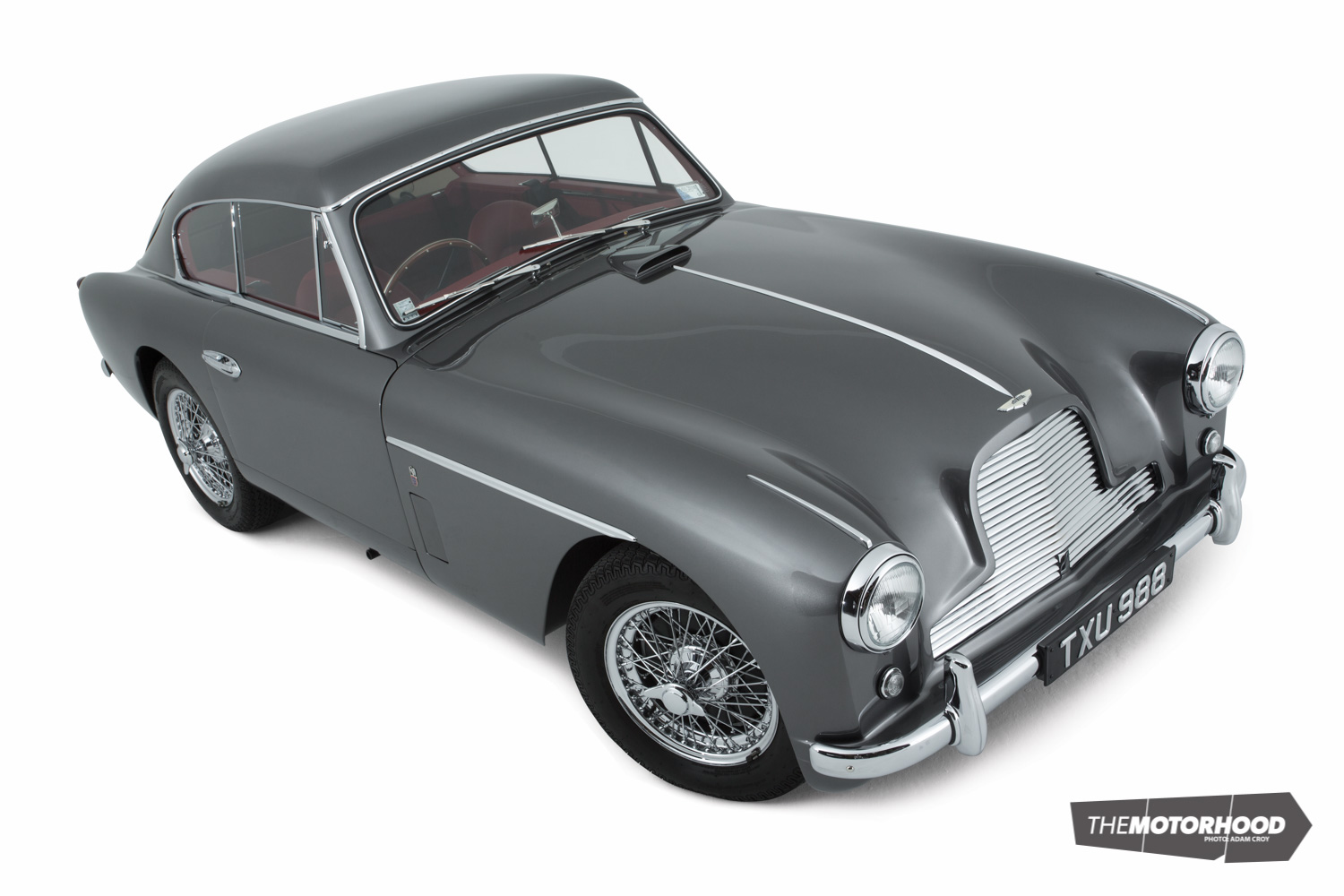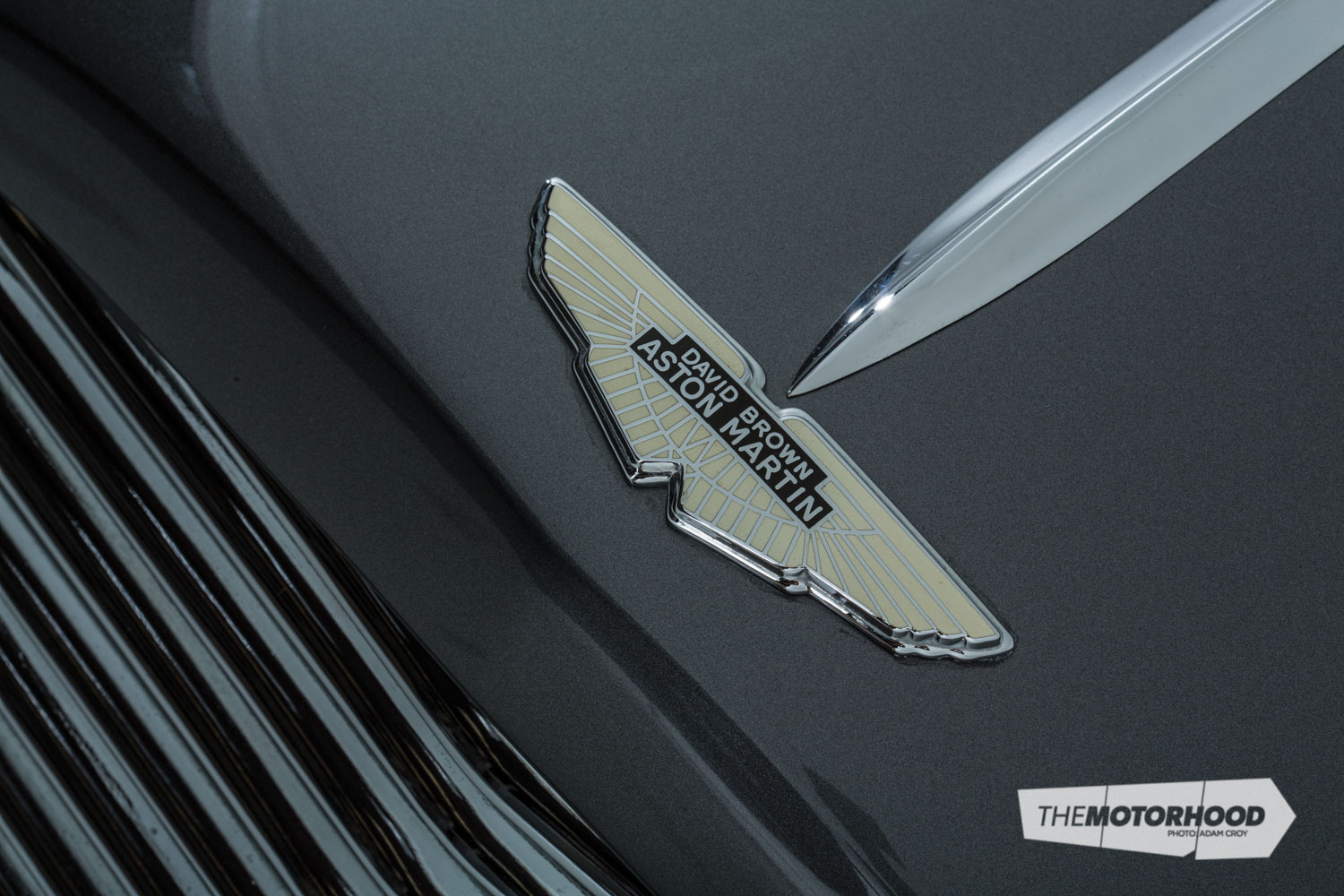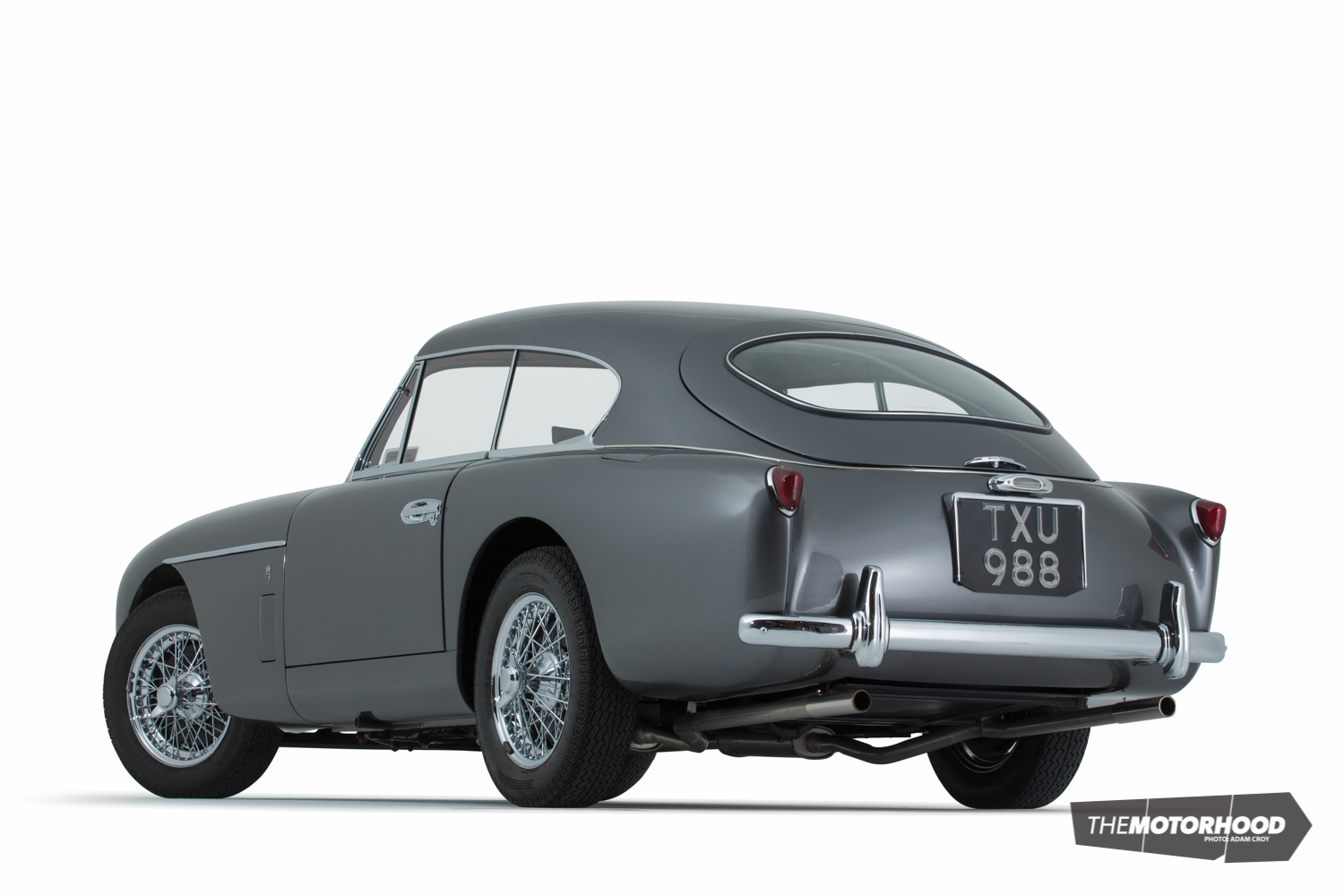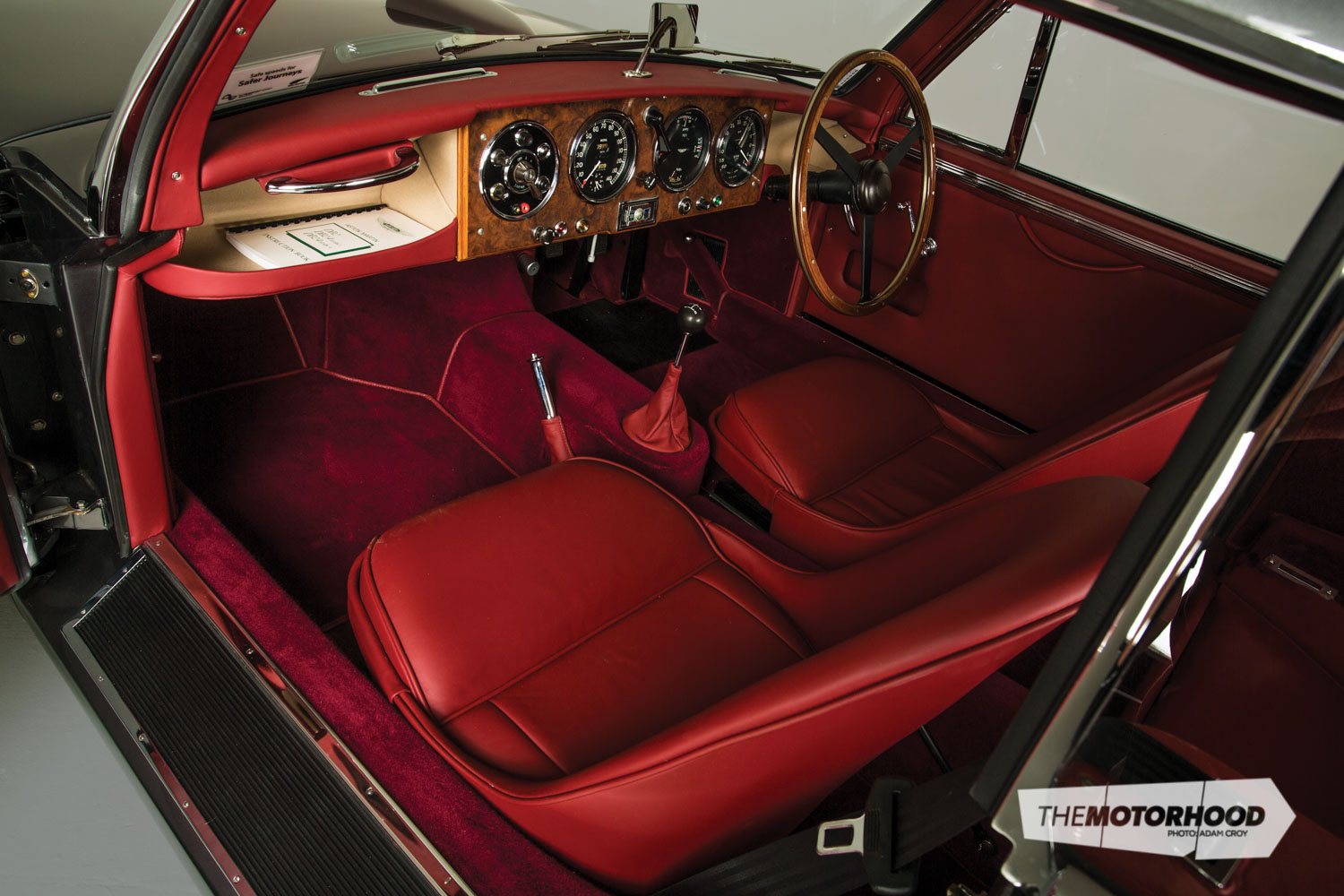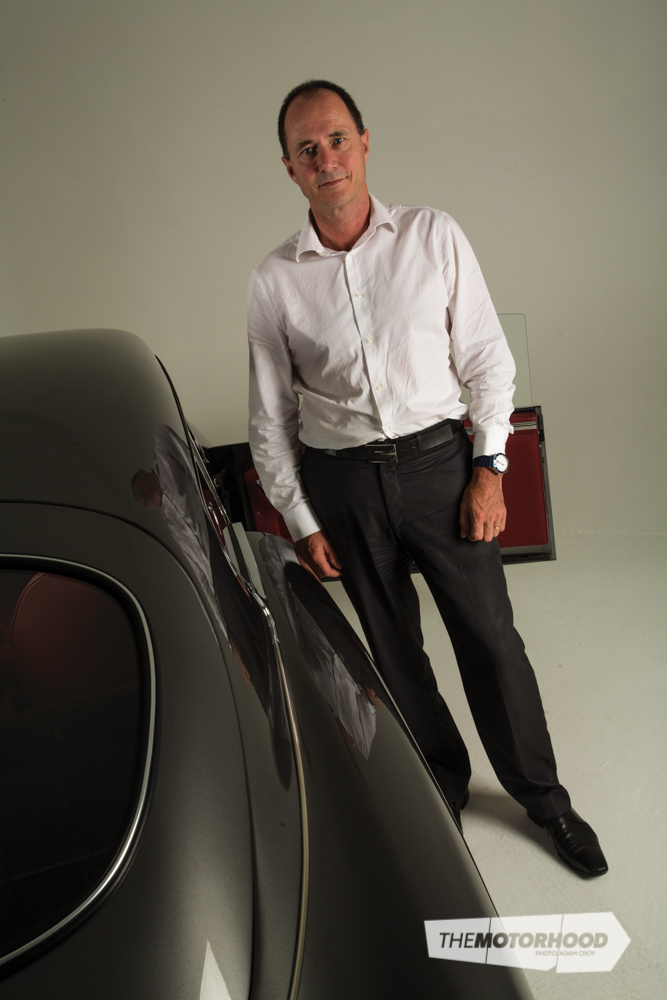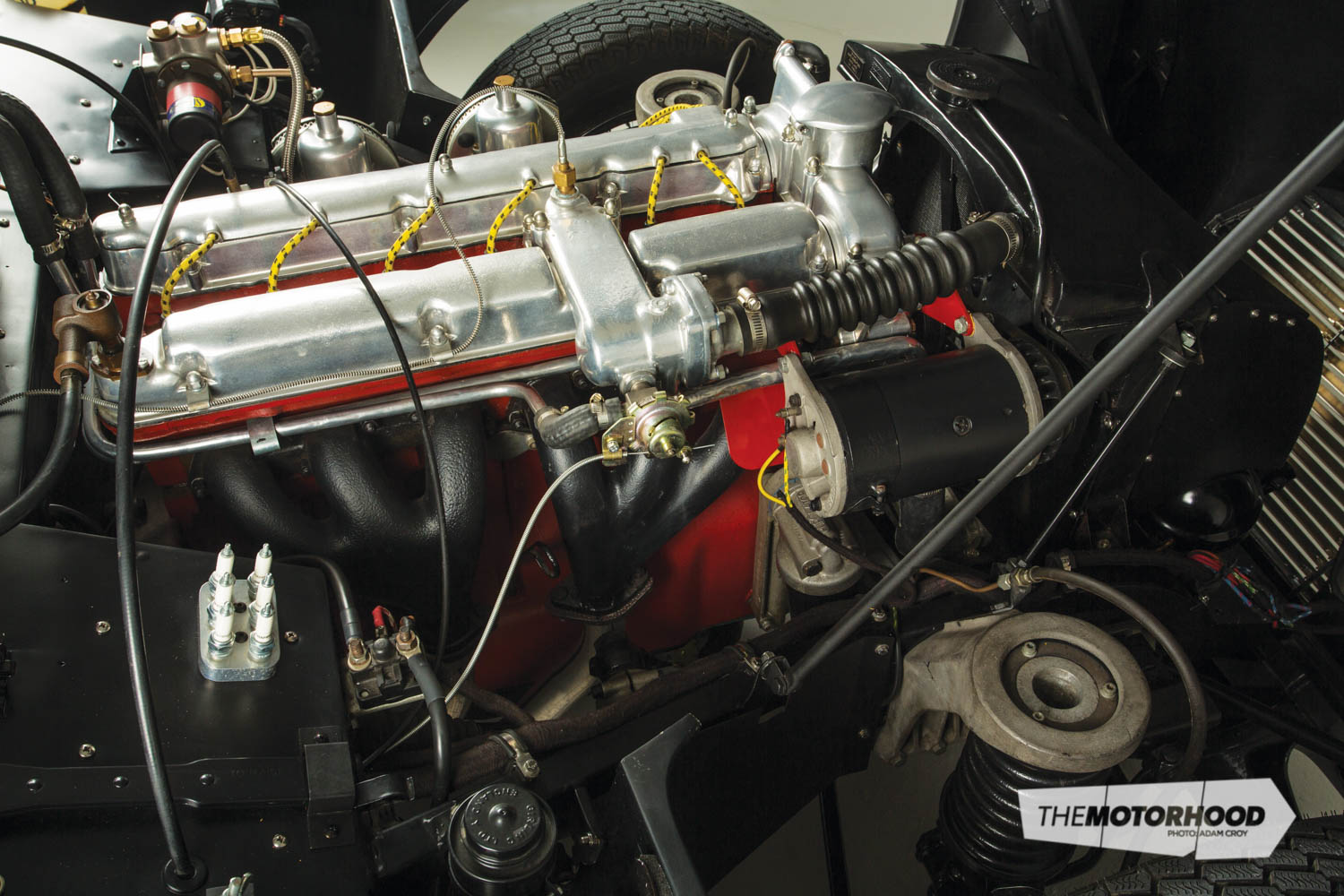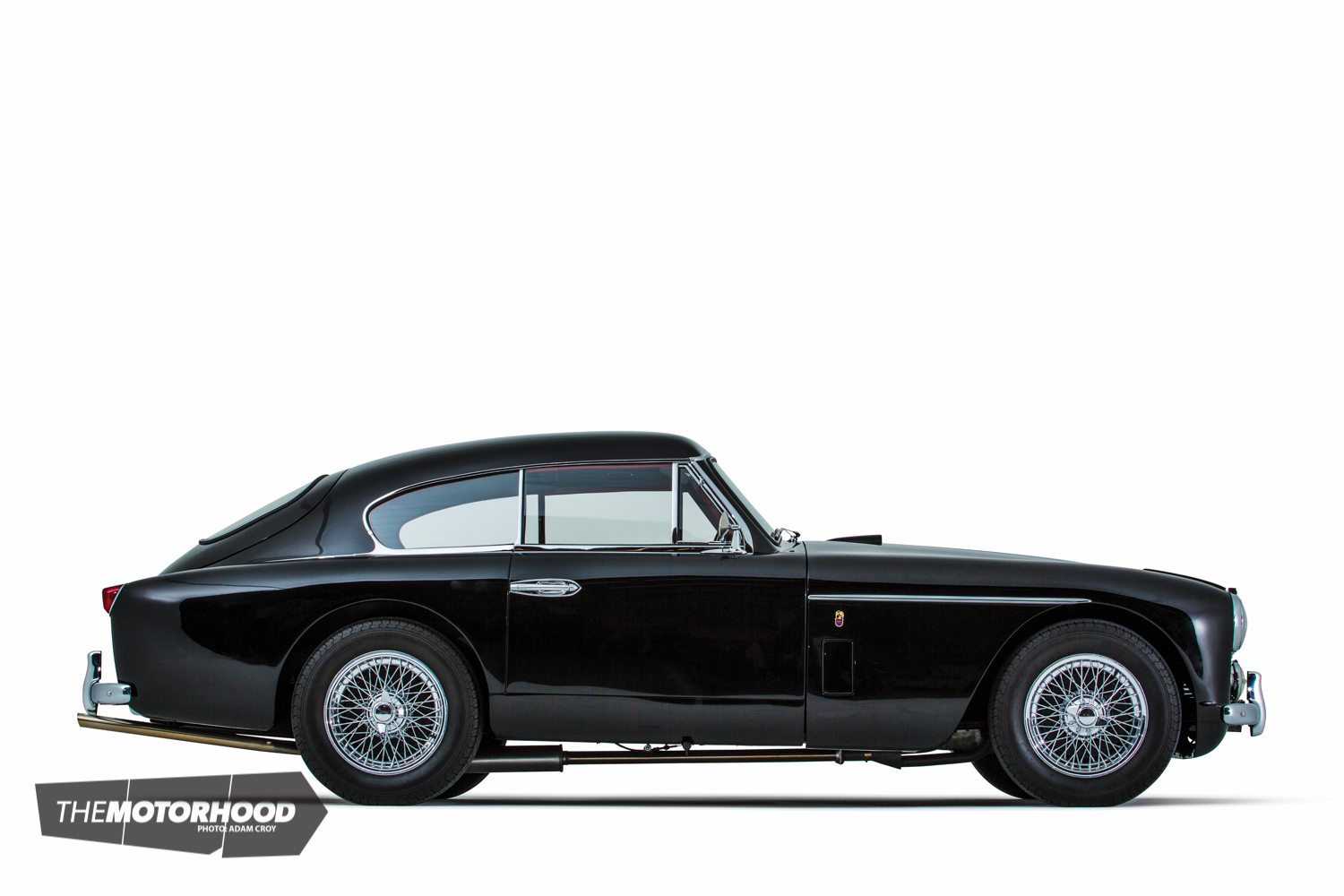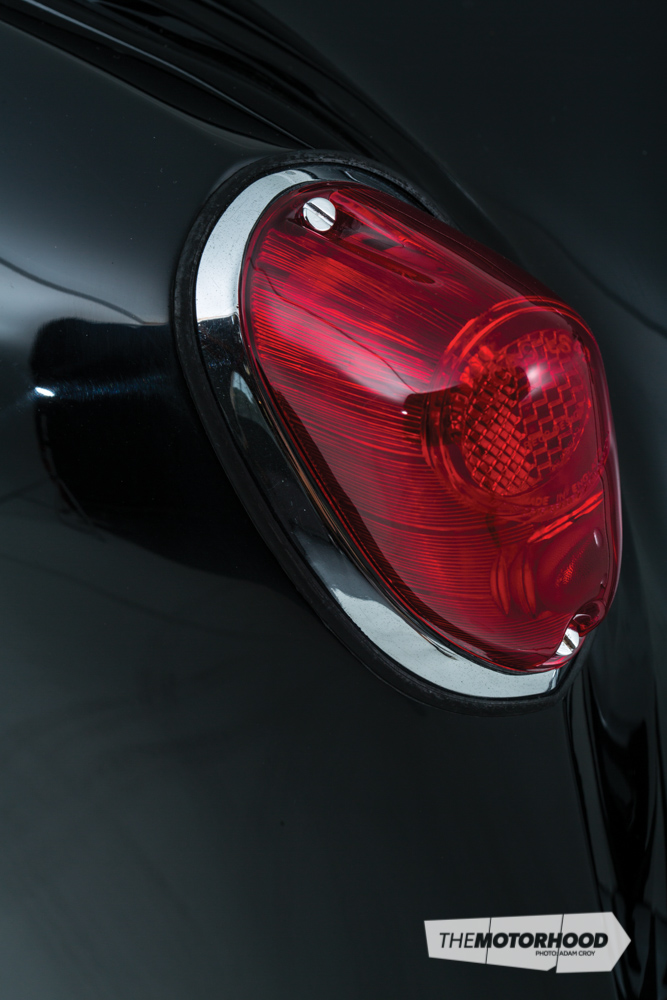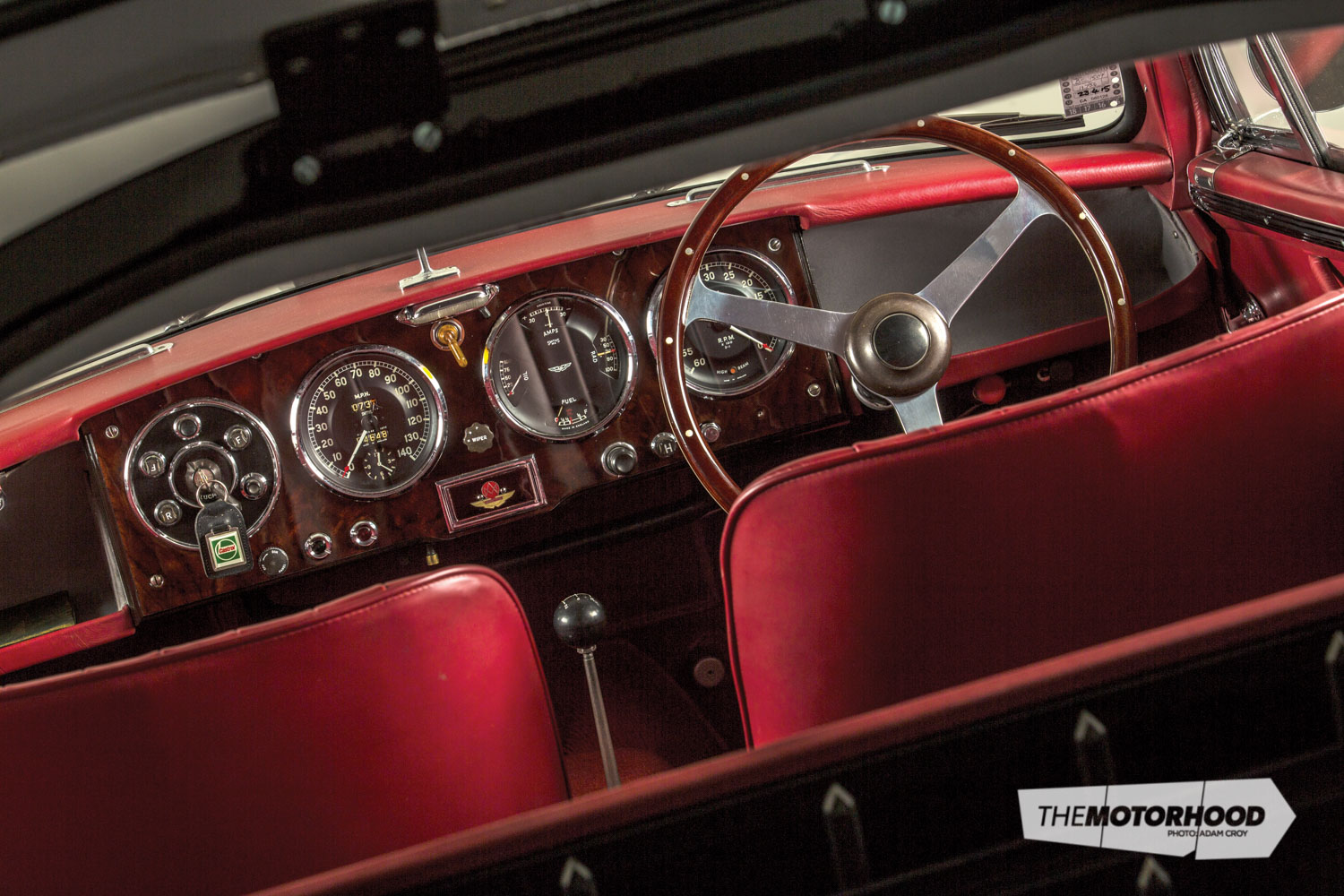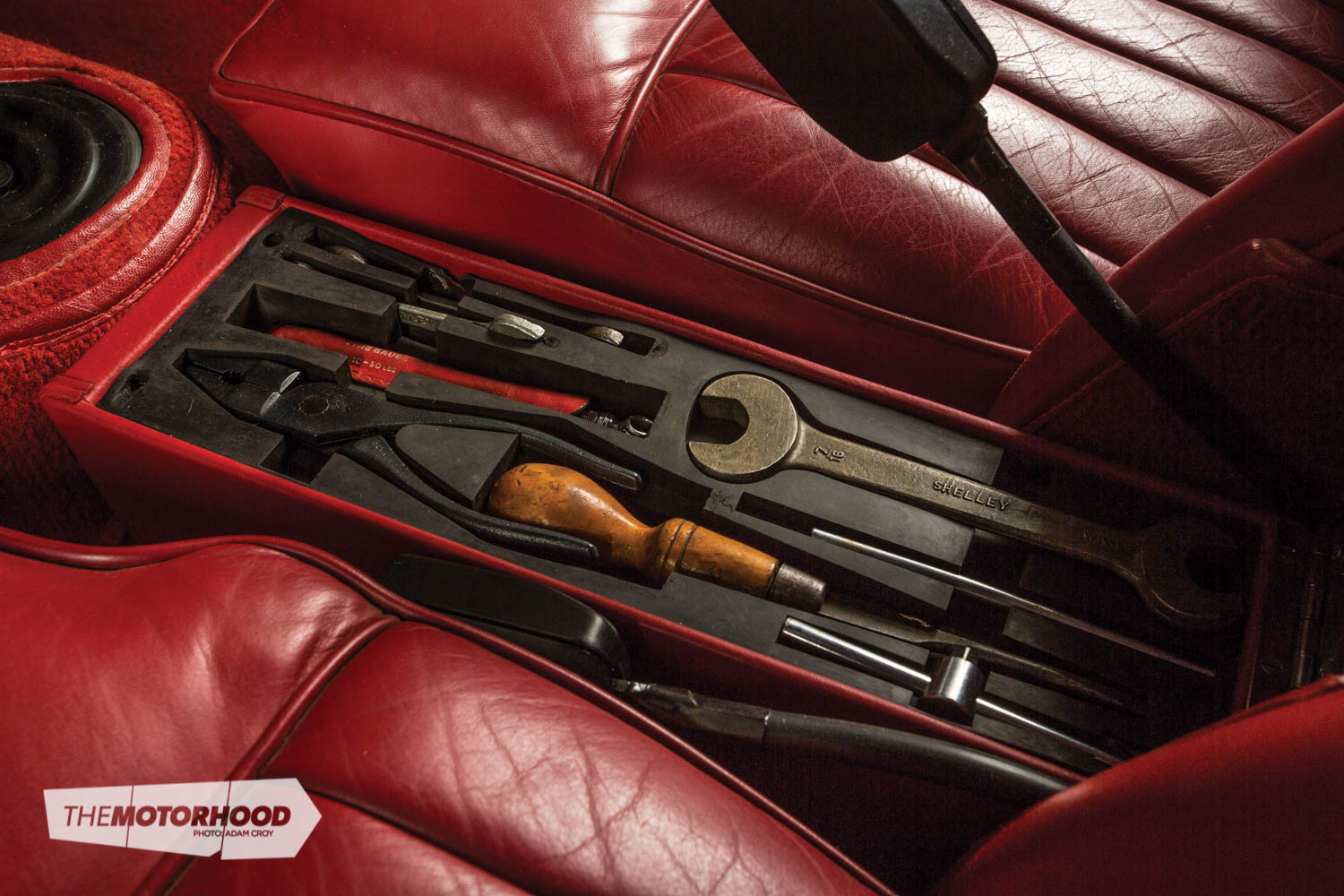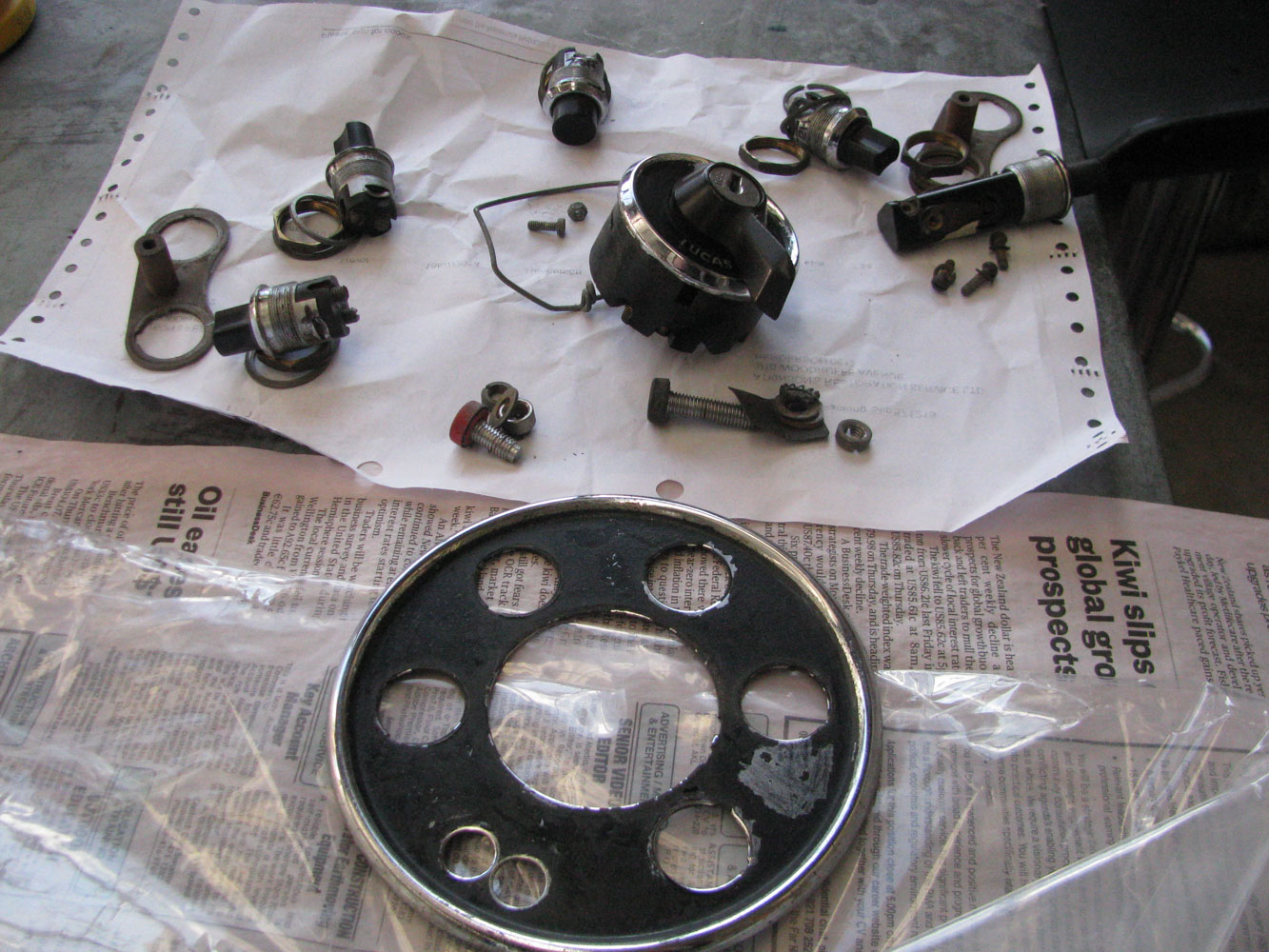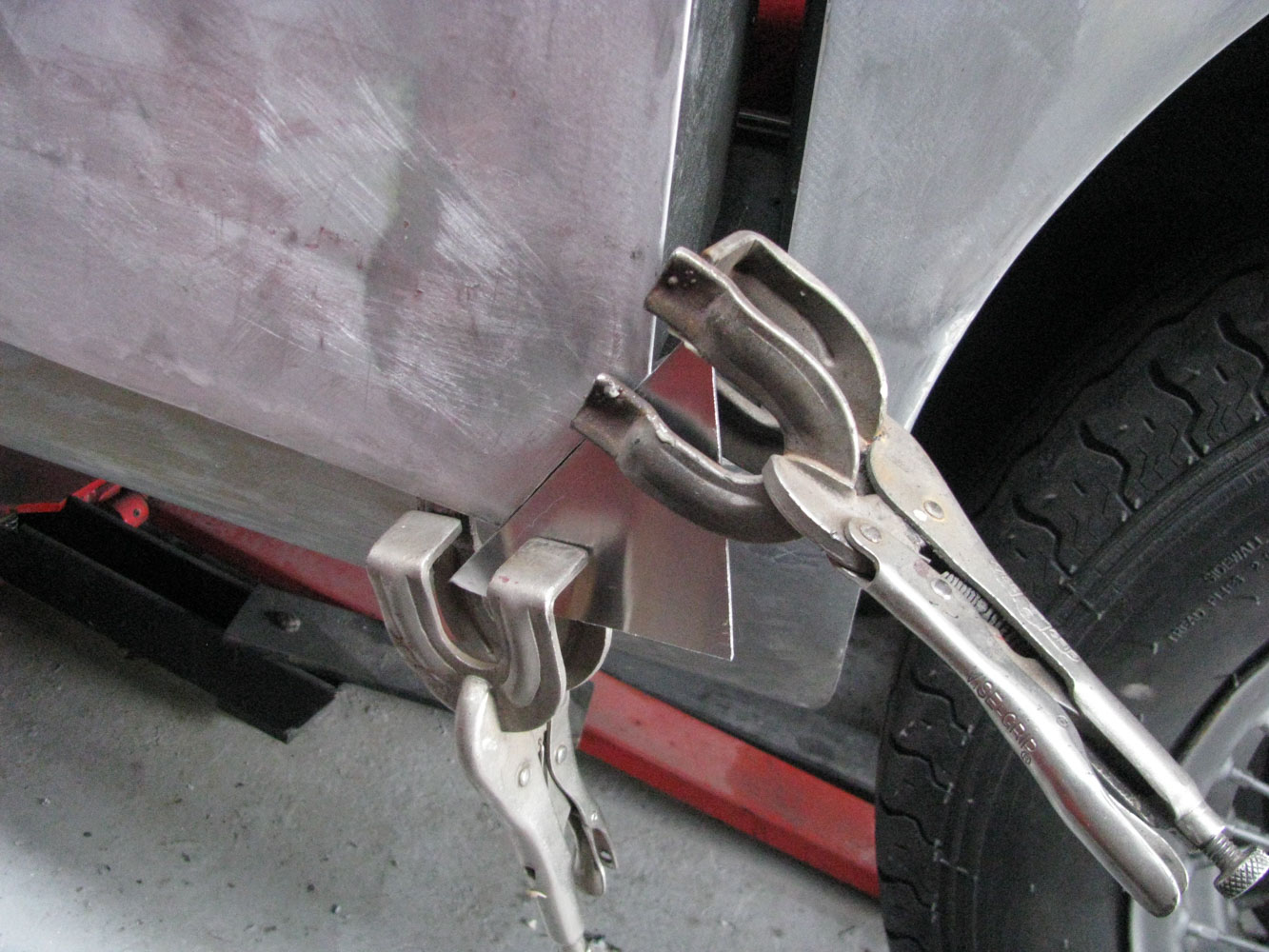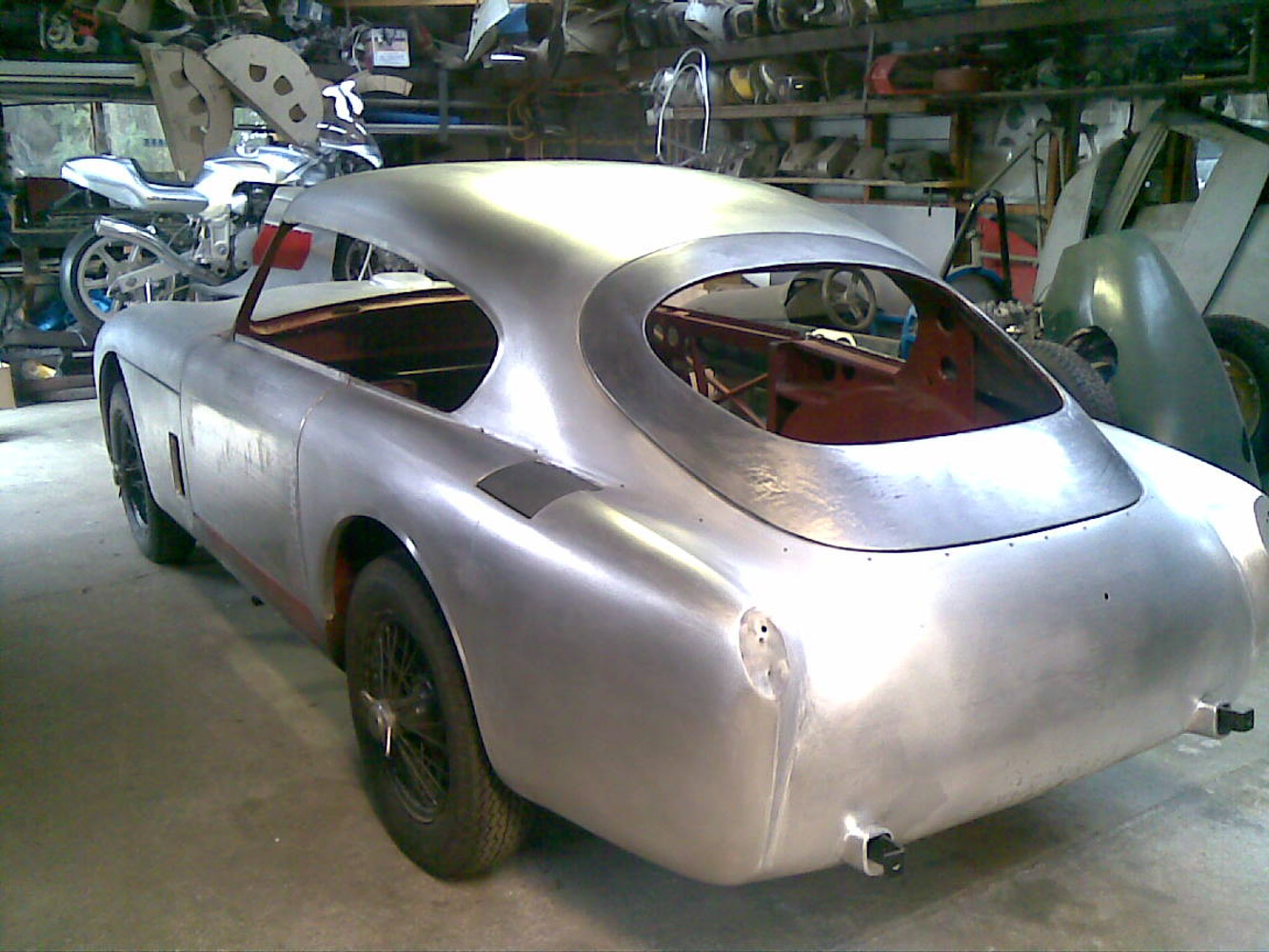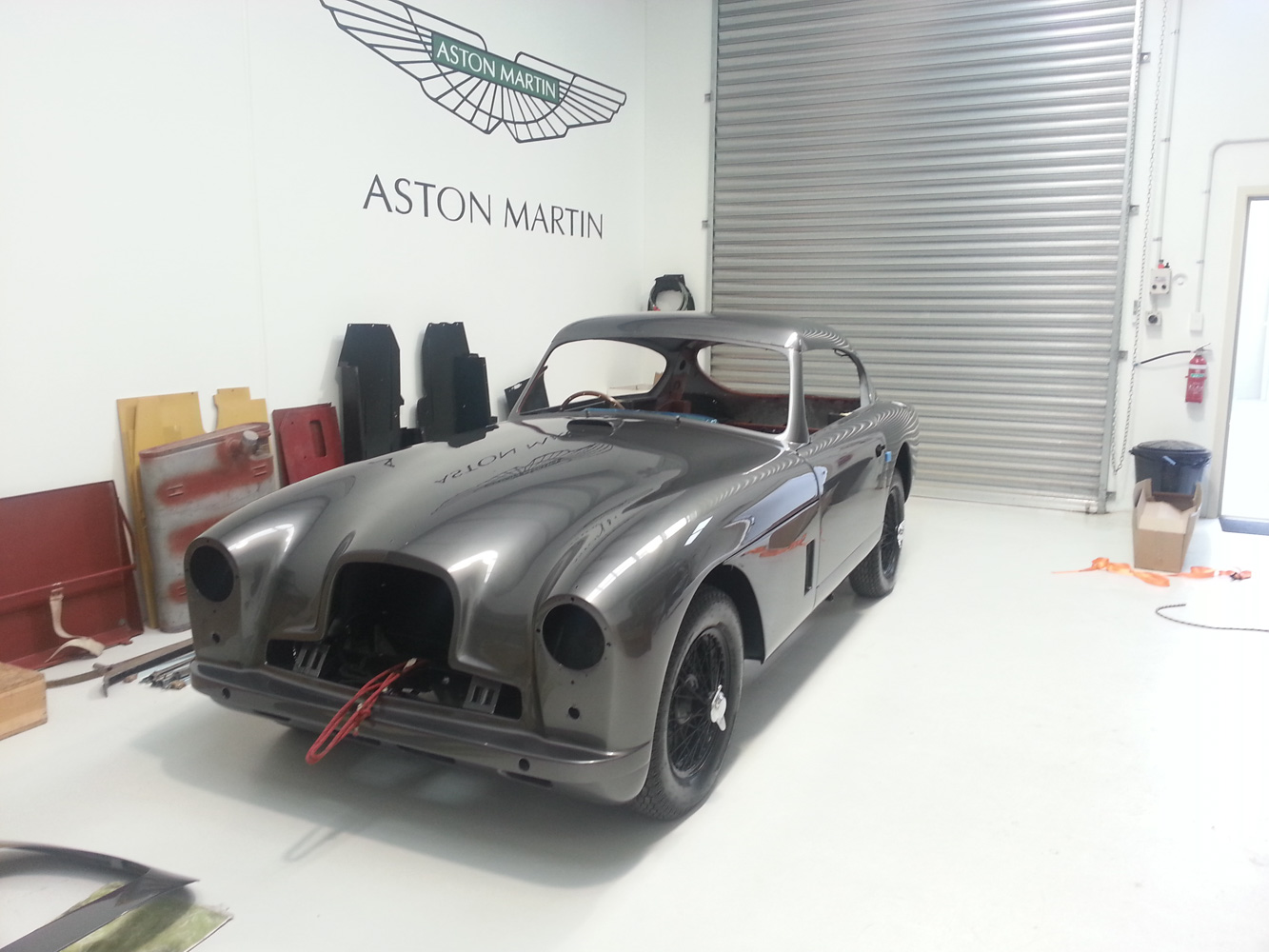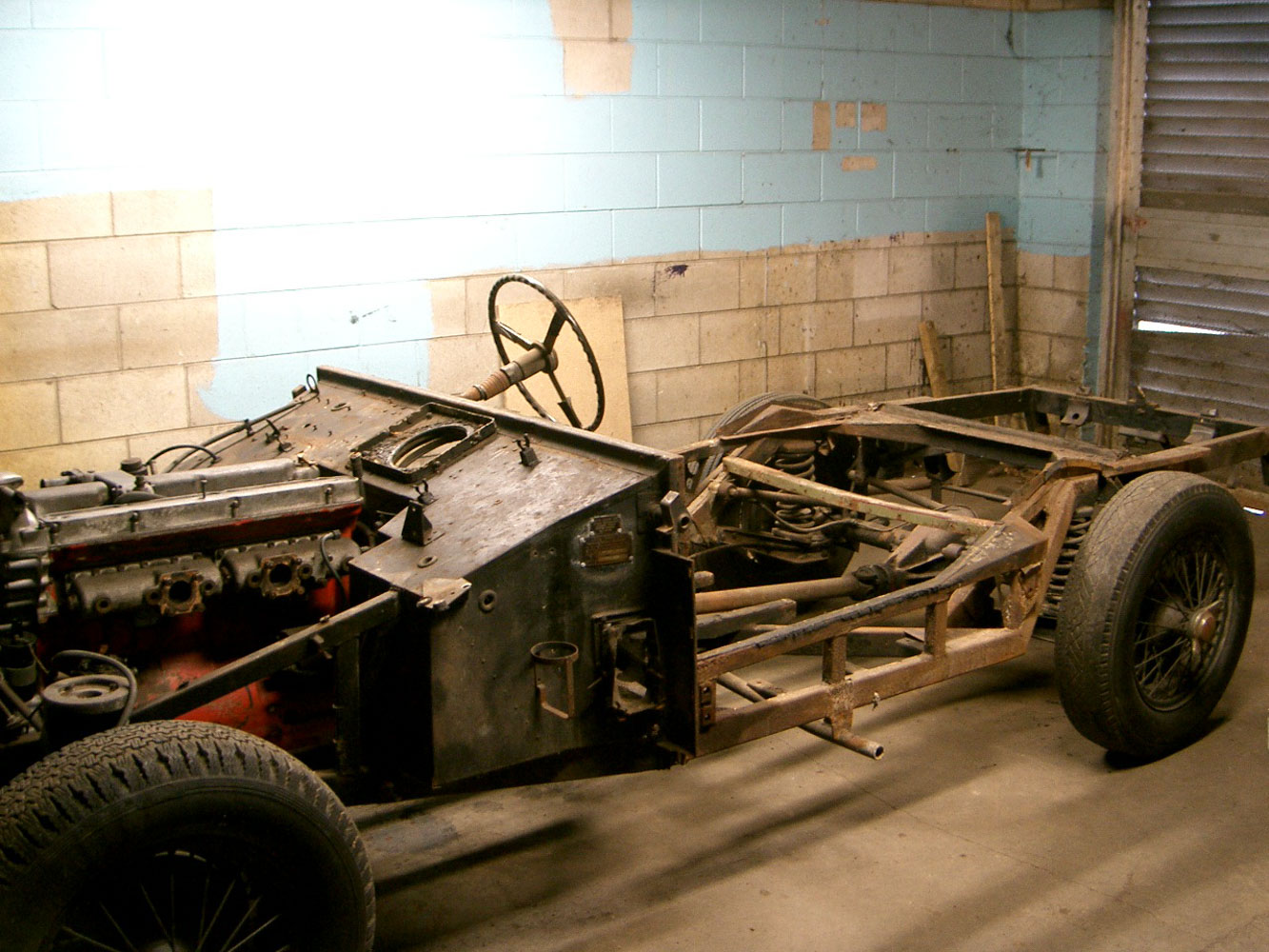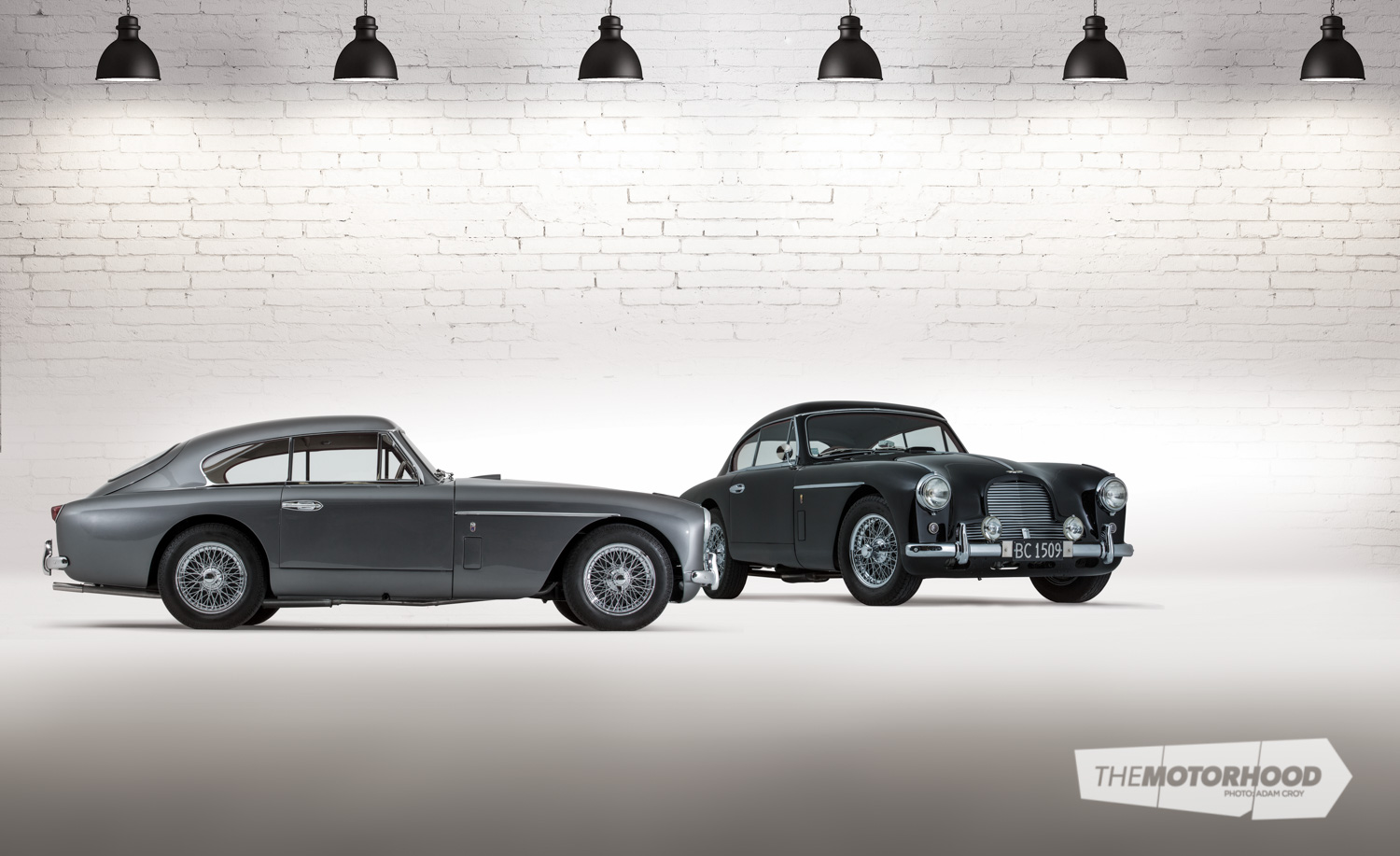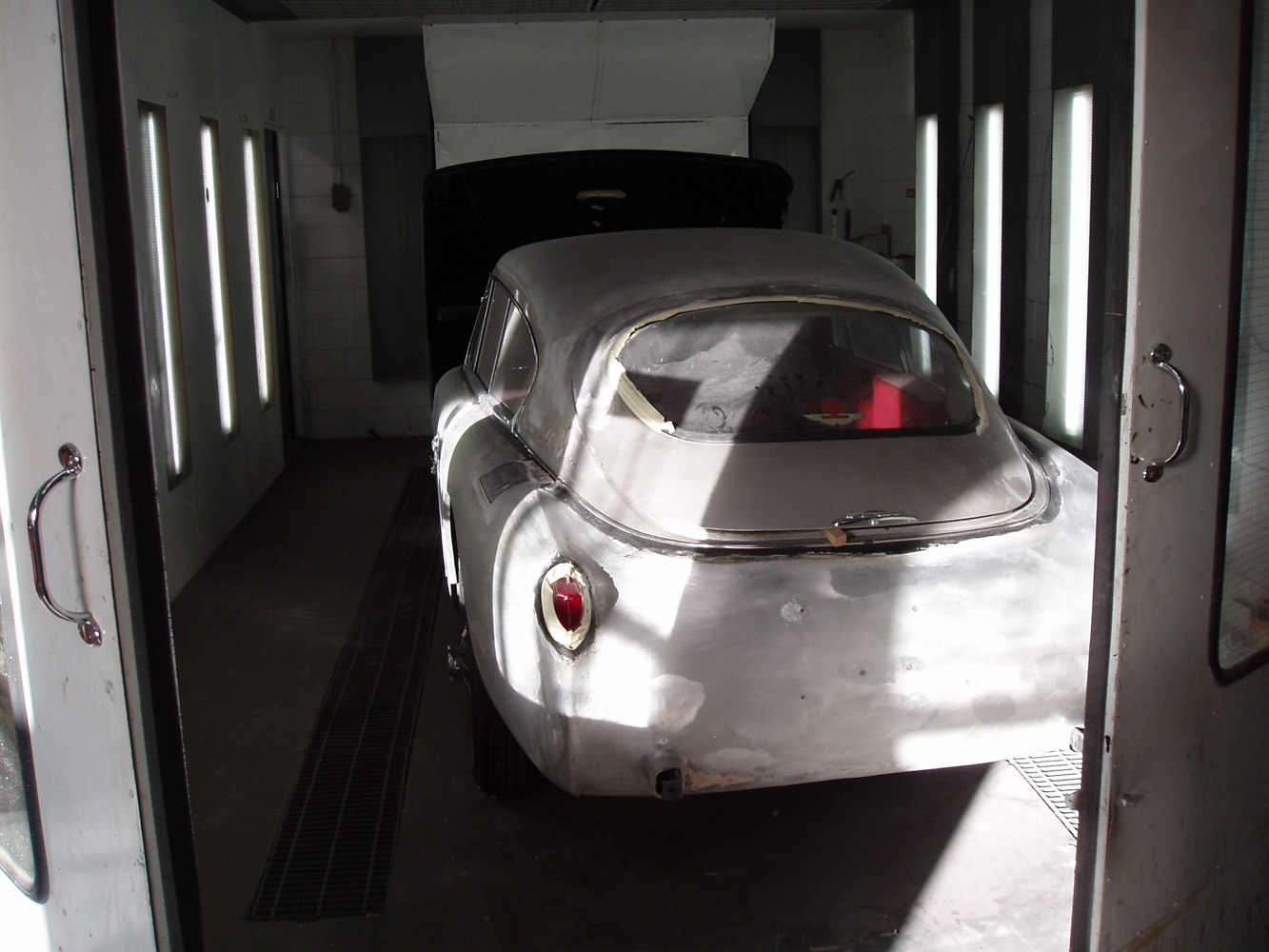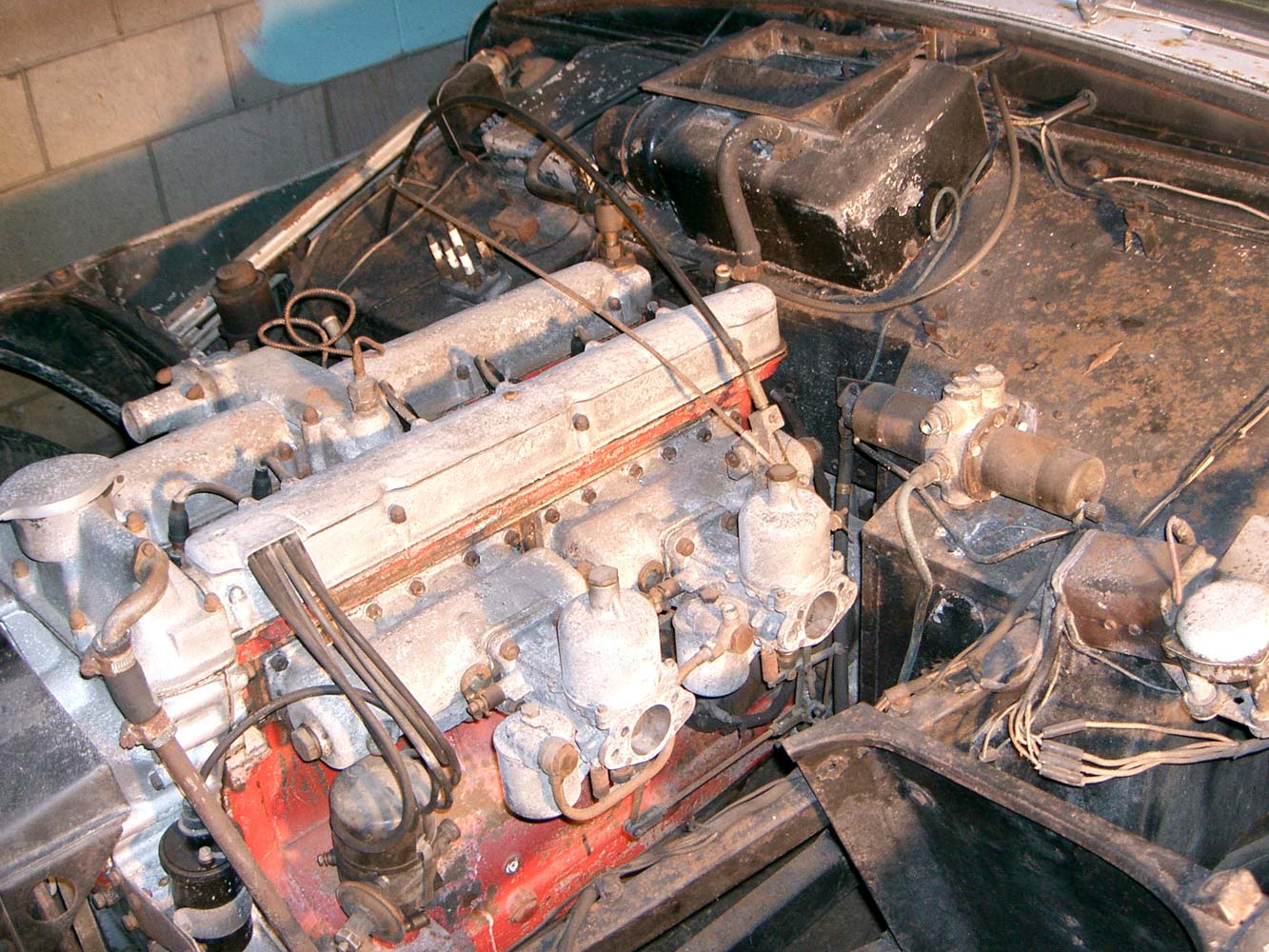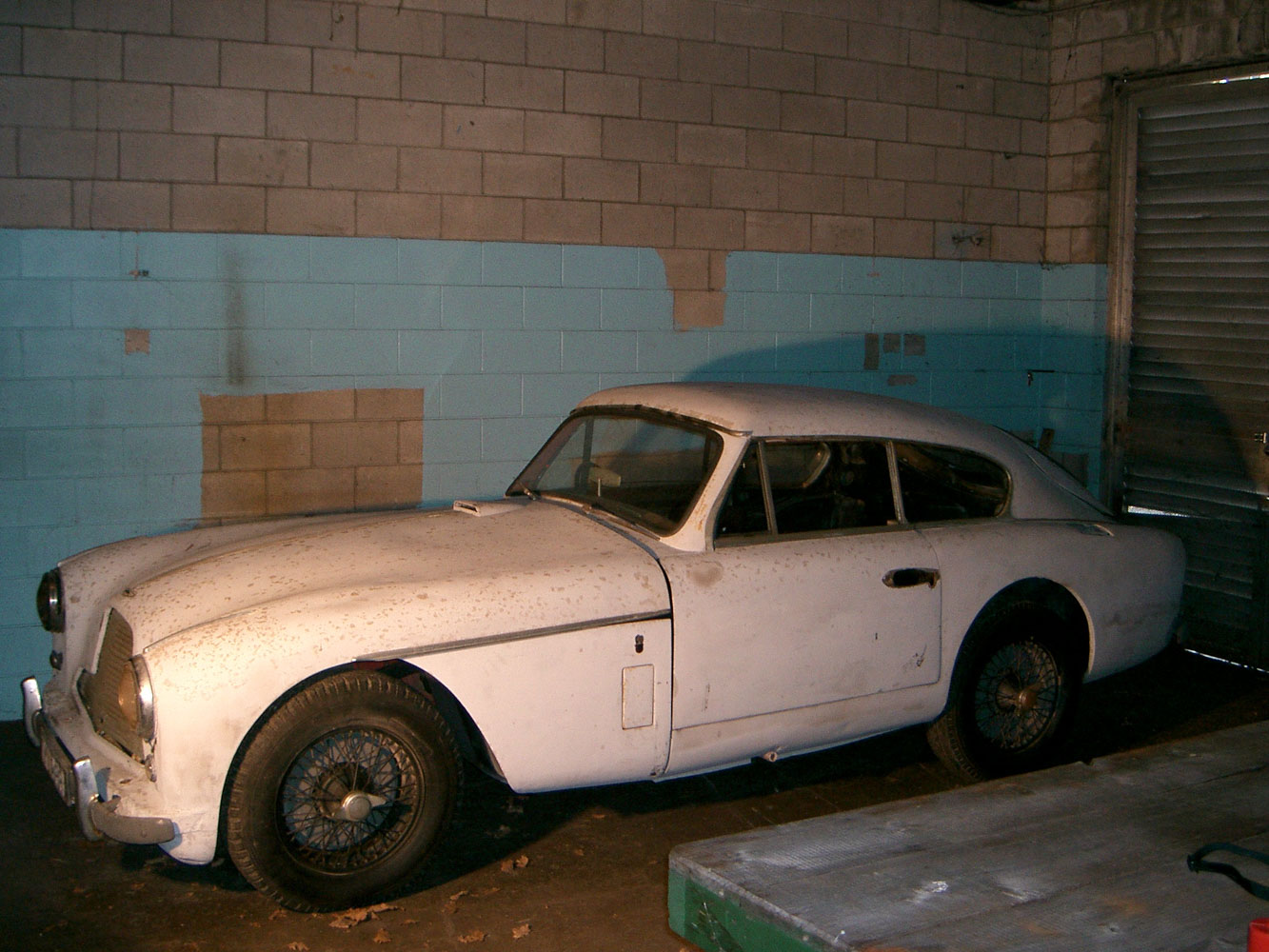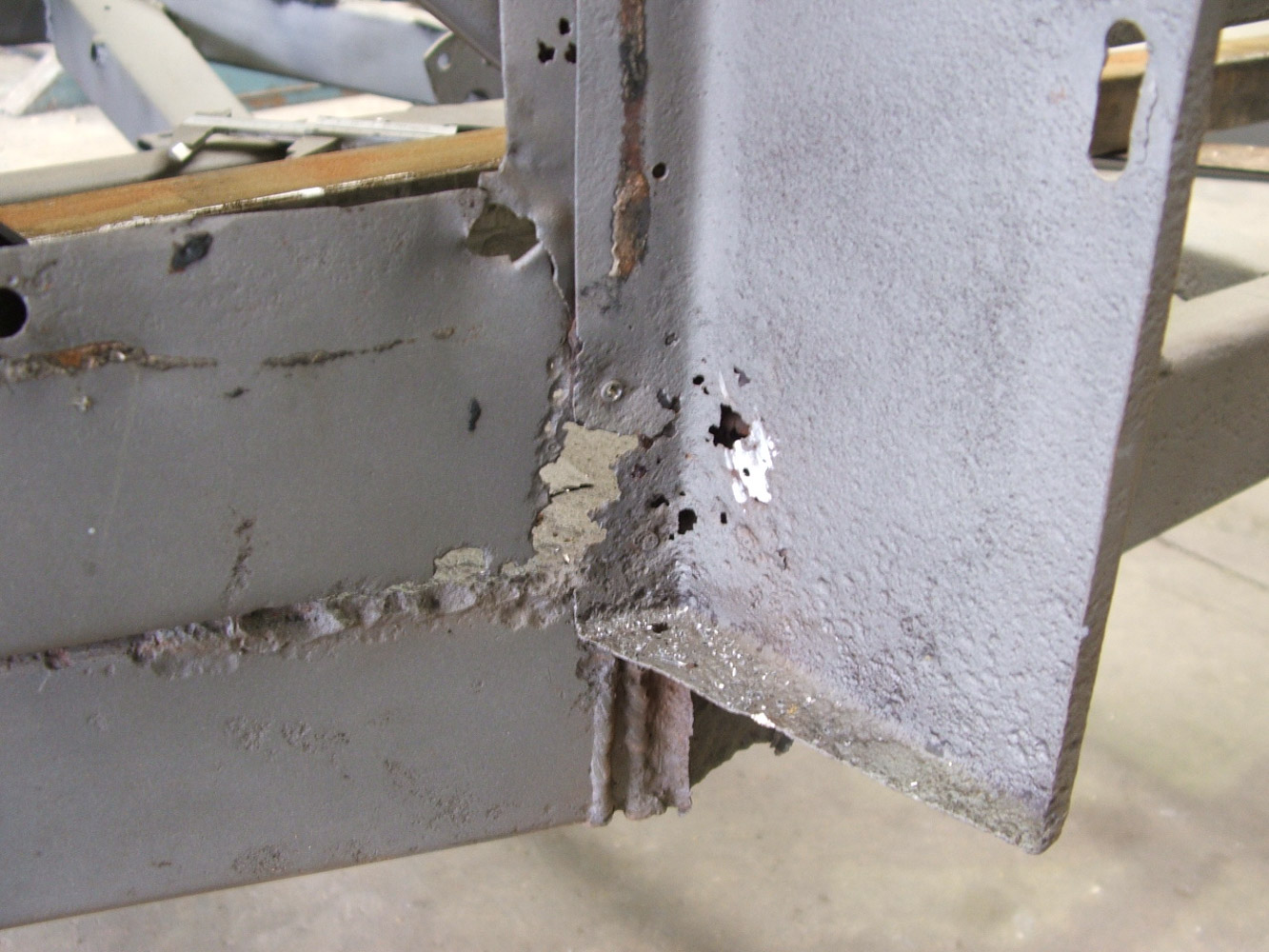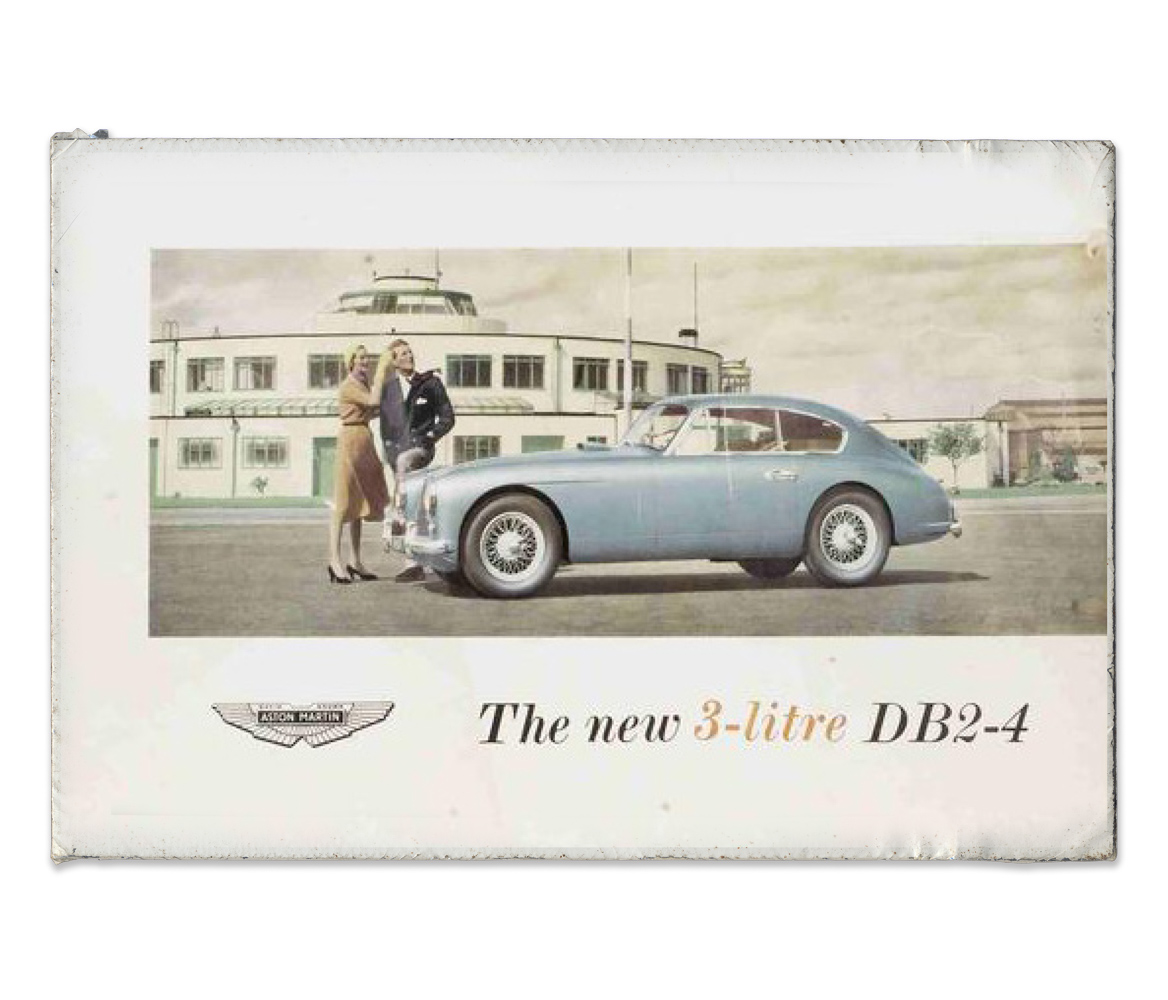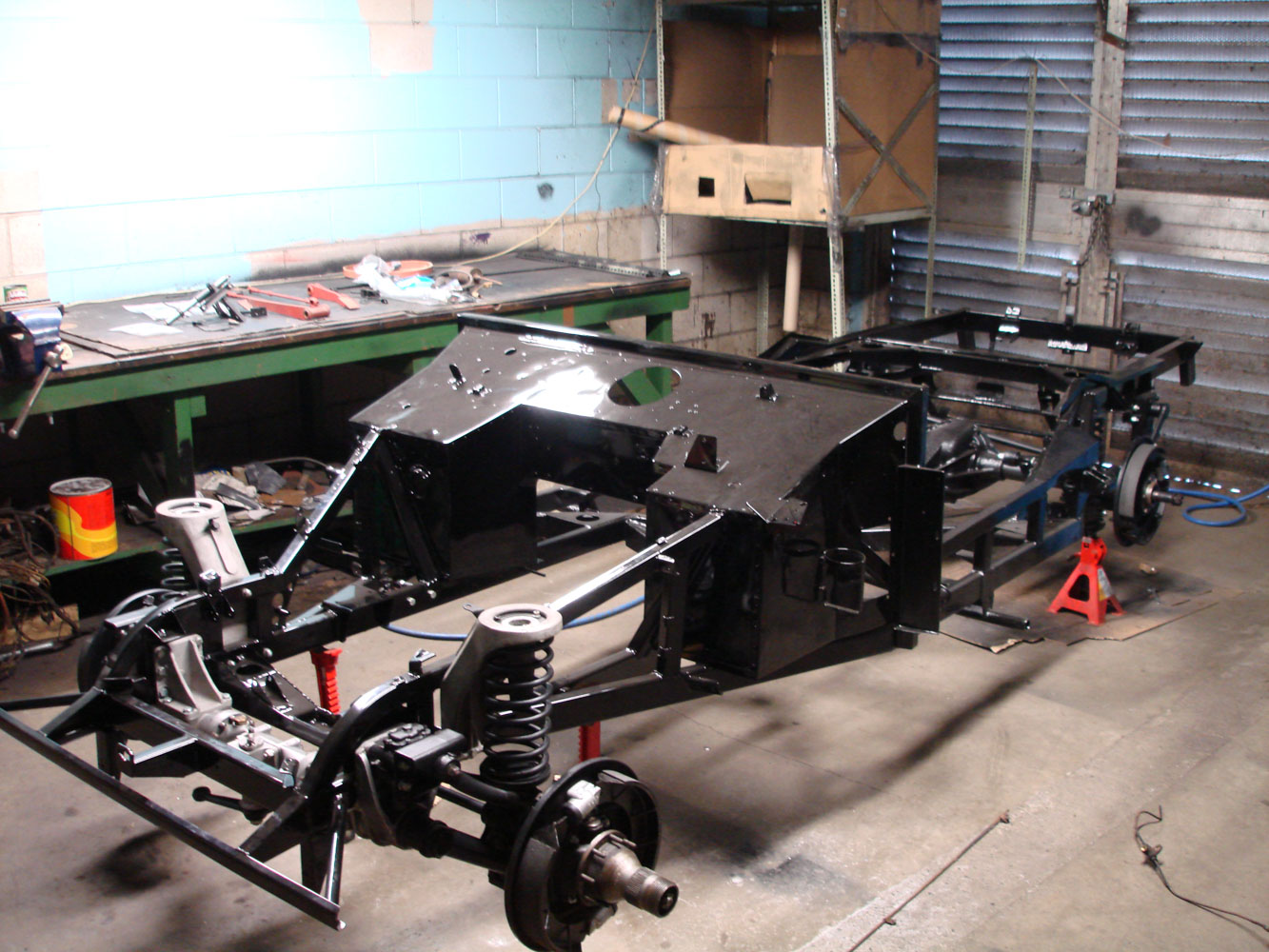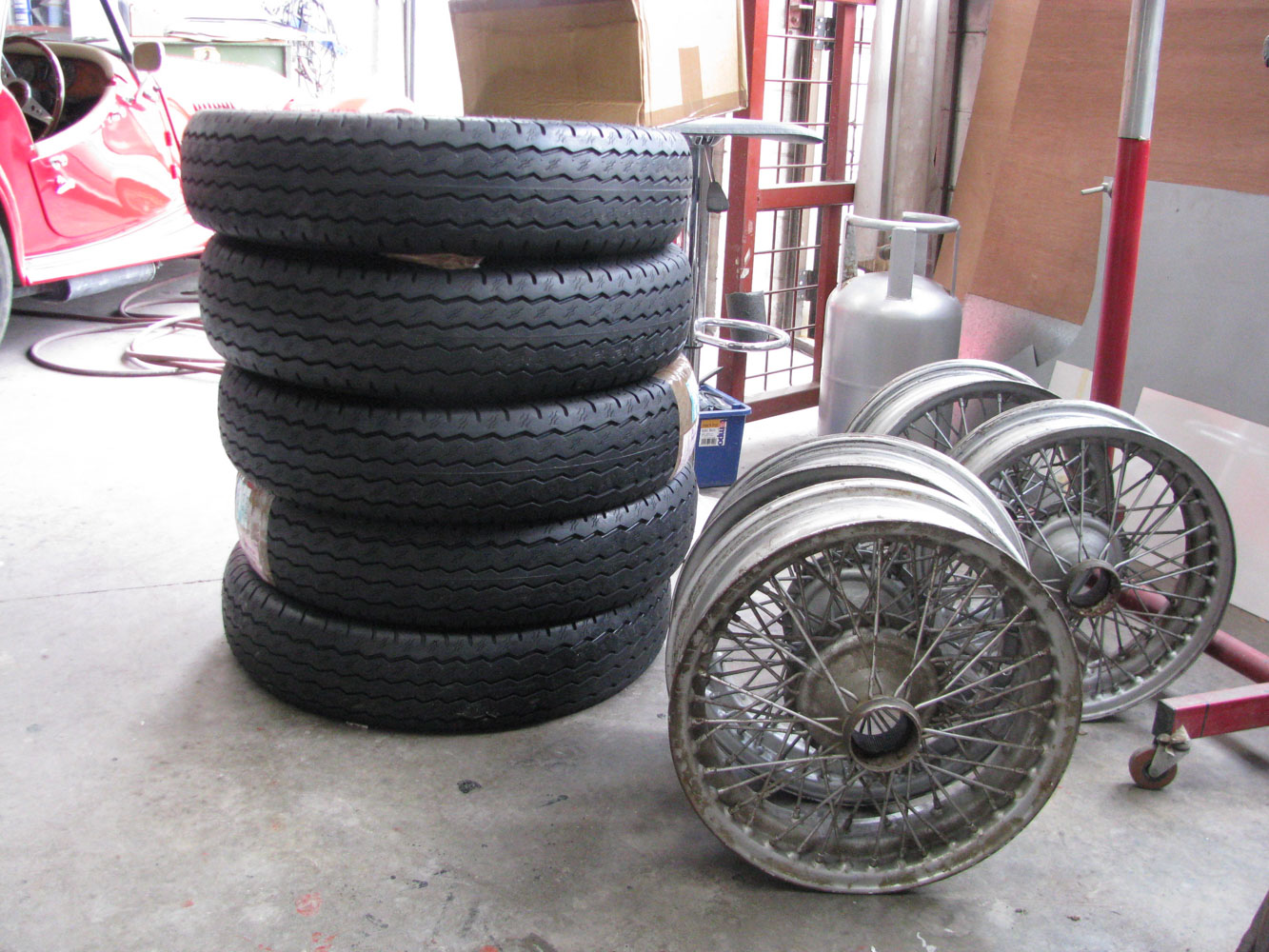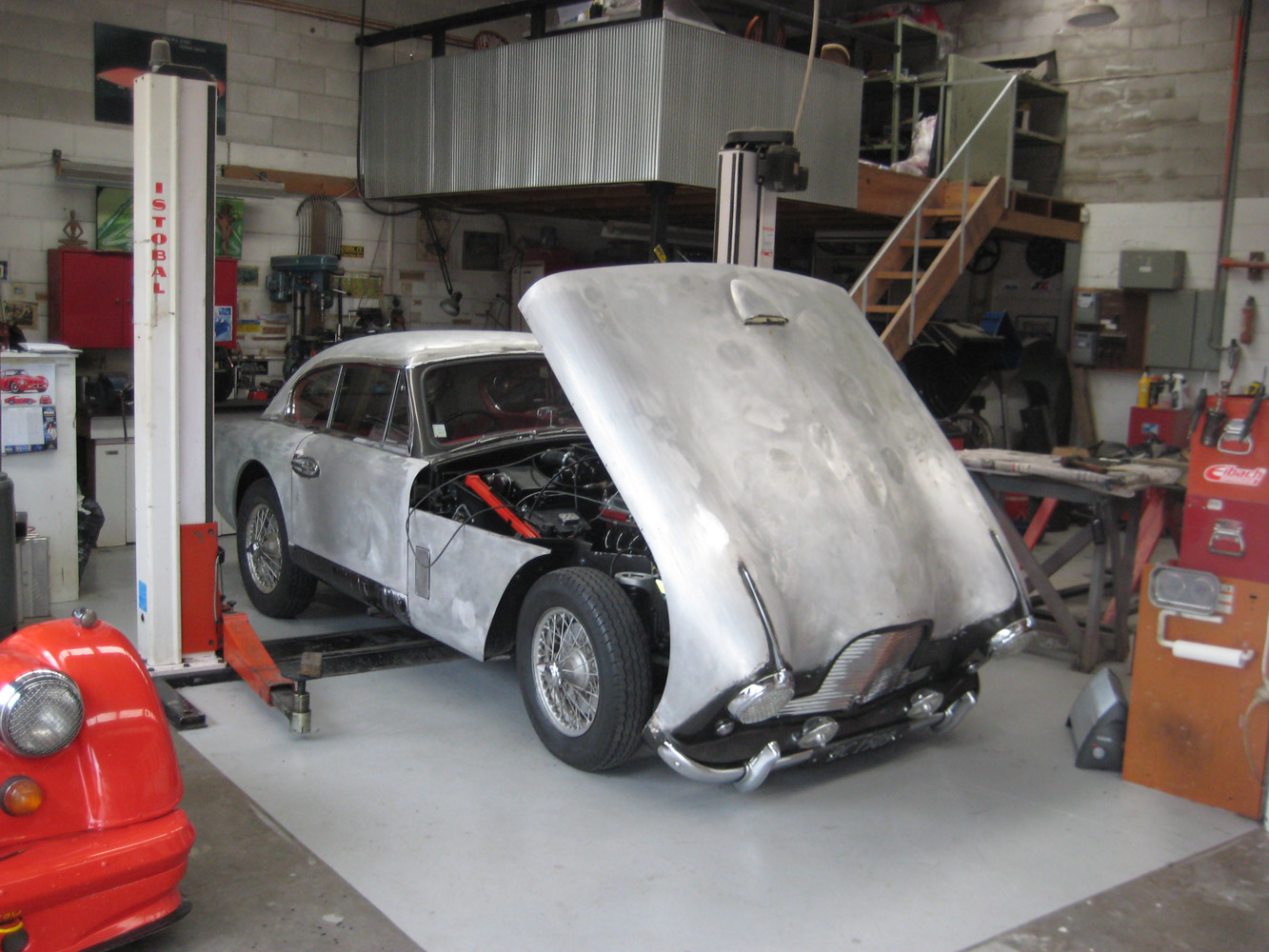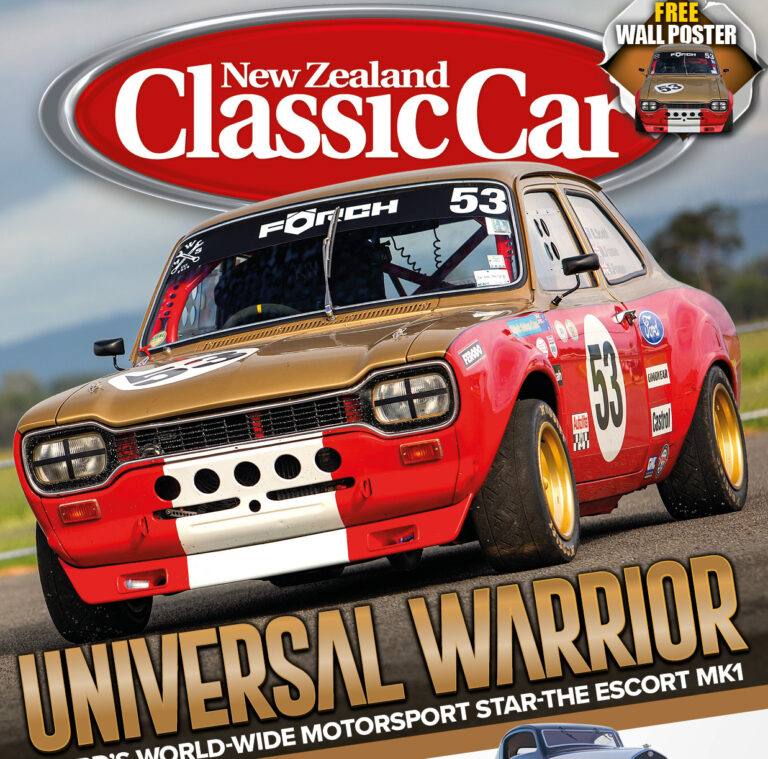data-animation-override>
“Although they didn’t win this year’s Team Event at the Ellerslie Intermarque Concours, this gorgeous pair of Astons certainly lit up the Winners Circle”
Ray Ferner was brought up within a motoring family that owned mainly vintage cars such as Lea-Francis, Alvis and Riley, amongst others. He’d also handled a few do-ups on cars during his student days — the best being a Triumph TR6. Originally from California, Ray converted the TR6 to RHD, as well as giving it a general tidy-up. However, the car he remembers best from his student days was the Singer Vogue that saw he and his friends referring to themselves as ‘Team Vogue’ — spending their days away from university touring through the passes and high country stations all around the Canterbury region in fine style.

Fast forward to 2004, and Ray’s Aston Martin journey began whilst searching for a suitable project car — his original intention being to find an E-Type, a car he’d always found very appealing. Soon, however, a decision was made to opt for an Aston Martin. An online search revealed a suitable car being put up for sale by Shannons, and he duly registered for the auction, subsequently purchasing it sight unseen. Ray and his family were hosting a dinner party at the time the auction was in progress, and he recalls having to duck out frequently for a few minutes at a time to up his phone bid.
As Ray now says, “that probably wasn’t the best way to purchase a classic car.”
Luckily, as it transpired, he actually didn’t end up overpaying for the Aston due to its very poor condition — just as well, the restoration took him 10 years and a few hard-earned dollars to complete. But it wasn’t until the car arrived in New Zealand that Ray realized the scope of the project ahead of him — basically a total rebuild of everything would be required.
Competition history

Further investigation revealed that the Aston Martin was first registered to Count Charles de Salis on May 18, 1957 and was one of only 199 DB2/4 MkIIs built. The MkIII was also produced in 1957 — the last of the DB2 series.
From what Ray could find, Count de Salis bought the car primarily for racing, and installed continental lighting and seats with improved lumbar support, and he had a competition number in a roundel painted on the car. According to the service manual considerable engine and remedial work on the body was completed over 1957 and 1958, no doubt due to aggressive driving and the odd accident.

Count de Salis raced the car in the 1958 Tulip Rally, winning his class, and he also competed on the Monte Carlo Rally of that year, as well as various other competitions in the UK and Europe.
With a bit of online searching along with a few late-night phone calls, Ray discovered that Count de Salis was still alive. When contacted, the Count remembered the Aston Martin well, and sent Ray some pictures of the car racing in the Tulip Rally — including one featured in the May 9, 1959 edition of Autocar magazine showing the Count’s Aston on the front row of the grid at Zandvoort race track, alongside a pair of Mercedes 300SL coupés. He also sent a copy of a note of congratulations from Aston Martin, and an advertisement that Aston Martin placed in a magazine celebrating the Tulip Rally success. Ray thinks that Count de Salis sold the car in 1959 to purchase a newer model for further competition.
The Aston then went through a series of owners in England, and Ray understands that it was shipped to Australia some time during the 1970s, although it was never registered in Australia, and slowly deteriorated in a shed somewhere near Sydney. The salt the car had picked up during its sojourn on British roads probably compounded corrosion issues, and it finally ended up on the auction block in 2004 in a very sorry state and that, of course, is where Ray came into the story.
The restoration project

Working a few hours during weekends, Ray slowly disassembled the car and began the process of getting the chassis into shape as the foundation for the Aston’s restoration. There was plenty of rust to deal with, but everything was basically straight. The car’s running gear was completely overhauled with new bushes, bearings and seals throughout. Thankfully, most of these parts are available through Aston Services in the UK and, according to Ray, it was most helpful in sourcing the correct parts during the restoration process.
Unfortunately, the body was much more of a mess.

Ray contacted Steve Roberts, a well-known body expert, who was very interested in working on the car. Both Steve and his wife worked for Aston Martin in the 1960s. Steve spent several months removing the aluminium body from the sub frame and then repairing the frame, much of which needed to be replaced. Rebuilding the DB2’s aluminium body proved to be a huge task and, unfortunately, the wheel arches, front of the bonnet and door panels were well beyond repair, leaving the roof as the only salvageable panel. In fact, Steve commented to Ray that this was the most comprehensive restoration he’d ever tackled — and he’s done a few!
All that work was worth it in the end as the final result was brilliant — and the next step was getting the first layer of paint on the car with all of the basic final fairing. Ray employed the services of Garth Chitty at Evans European to apply the original Moonbeam Grey colour scheme. According to Ray, you only have to have a look around the workshop to see that they are extremely professional and, with a special car like the Aston, they are prepared to go the extra mile.

With the car primed, Ray spent a couple of years installing the wiring, rechroming all the trim, sorting out the engine and gearbox, re-installing everything and then getting the car up and running again. The DB2’s engine is a straight six, twin overhead cam, 3.0-litre unit, a motor that was originally designed under the eye of the late, great WO Bentley while he was part of the Lagonda company — Aston Martin owner, David Brown, having acquired Lagonda to get hold of this engine for the DB2 series of cars.
West Auckland Reconditioners carried out all the engine machining and bottom-end assembly, whilst Ray finished off the easier bits. The gearbox was rebuilt by The Gearbox Factory before Ray assembled it all into the chassis. At this point, the car was basically mobile.

The final paint was next on the list, and the car was actually starting to look like an Aston Martin — that certainly helped with motivation to complete the project. Ray reinstalled all the chrome trim, and the glass was fitted by Ron Hodgson of Custom Autoglass in preparation for the eventual certification process. Ray had been keen to fit seat belts for safety and, fortunately, there was a convenient cavity for retractors to be mounted. When eventually fitted, the new seat belts looked as if they’d been there from new.
The Aston is basically to standard specification, and the entire restoration was documented and photographed, so certification was a relatively easy and painless process.

With the DB2 back on the road, Ray drove it for few hundred kilometres as a basic run-in procedure, and then had the engine dyno tuned. He reckons it still runs a little roughly as the carburettors are in need of a bit of attention, a task that’s on the top of his to-do list.
He did not restore the car for show as he intends to drive it on a regular basis. However, after the huge effort of the restoration process, and realizing that the Aston would never be in as good a condition ever again, he reckoned it was the perfect time to show it off at the Ellerslie Intermarque Concours d’Élégance. By pure chance, Grant Wallace had also recently finished restoration of exactly the same model and year car, and so they joined up to enter into the team event — and we’ll now turn our attention to Grant’s equally stunning Aston.
Grant’s DB2/4 MkII

Grant first car, purchased in 1967, was a 1931 Austin 7 saloon that needed new kingpins and other maintenance in order to meet the WoF standards of the day. As it was so small, Grant was able to park the Austin between the trunks of the trees on Symonds Street and the footpath kerb, without attracting the attention of the parking wardens, whilst he attended lectures at the University of Auckland. This car required all maintenance to be done in the home workshop, and taught Grant a lot about automotive engineering — effectively, the diminutive 7 supplied the foundation for his love of engines connected to wheels.
Several years later, an accident-damaged TR3A was acquired and totally rebuilt over a period of years, but was sold following Grant’s marriage to his wife, Helen, and the subsequent arrival of a family. When Grant’s children were young, there was time to work over another car, and this time it was a TR4A. This beauty was eventually sold to help fund the purchase of a bigger house.

At that time, Grant’s family also had a Triumph Herald — Helen’s car — and he reckons this was the easiest vehicle to maintain they ever owned. It was swapped for a BMW 200Tii in the mid 1970s, this arguably being the most expensive car to maintain they ever had, but an absolute joy to drive. It was sold when Helen engaged in full-time employment which came with a company car.
Then there was a period of about 15 years when they swapped cars for yachts when the children were teenagers, although they did undertake the rebuild of a 1972 Renault 4 estate car during that time — this originally being their daughter’s first car, and when she no longer wanted it, the Renault became a restoration project. Grant and Helen came back to sports cars in 2002 when they took delivery of a new Morgan Aero 8 from the factory in Malvern Link, near Worcester in the UK. Their car was number 130 from a build of 296 cars, a Series 1 version with no airbags or ABS, which made it arguably one of the last of the ‘true’ British sports cars built. The Morgan was definitely beyond Grant’s capabilities to maintain, but he found an excellent tradesperson in Derek Atkinson, owner of Atkinson Restoration Services in Henderson. Dave stepped up to the mark and has looked after the car ever since it arrived in New Zealand. Derek is the North Island Morgan sports car service expert and, as Grant and Helen’s was the first Aero 8 in New Zealand, they decided to work with him with regard to the learning curve required on how to look after these very individual, hand-built cars. All problems have been solved but, in retrospect, there have only really been a few over the years. This car remains in the stable at present, and is used frequently.

The couple grew to like their first Morgan so much that, in 2008, they purchased another — this time a 1988 Ford 1600cc 4/4 four-seater. It had been imported from the UK and was living in Havelock North. Totally different to the Aero 8, but quintessentially Morgan, she is the baby of the fleet and has also received a major rebuild courtesy of Derek Atkinson. The single overhead cam Ford CVH engine was elegantly rebuilt, with a few tweaks to provide better performance, and the bodywork and interior was given a major restoration. The numbers 4/4 after the word Morgan mean that it is a four wheel, four-cylinder-engined car, and theirs is a four-seater to make it easier to carry luggage when touring. This Morgan is ideal for city running, although she has been to Christchurch and back for the NZ Classic Car Rally in 2012, an event she handled extremely well.
The Aston arrives

Finally, after following up on a casual remark from Derek Atkinson about an old Aston in a barn that could be an interesting restoration project, Grant and Helen eventually became the owners of the late Bruce Radford’s 1957 Aston Martin DB2/4 saloon, in November 2012.
With a chassis number of AM3001155, originally this car was painted two-tone silver and gunmetal.
Delving back into the car’s history, Grant discovered that it had originally been imported by Manthel Motors in Lower Hutt, and was first registered to Ernest Vogtherr of Napier on March 13, 1957. On March 12, 1962, ownership changed to James Morey of Lower Hutt, and then to Denis Woods of Days Bay on June 1, 1962. The next owner was Leo Critchley of Levin, who took over the car on August 21, 1962, keeping it until July 1963, when it was sold to Wright Stevenson in Tauranga with 36,510 miles (58,757km) showing on its odometer. In December 1963 the Aston was sold to Robertson Cars in Broadway, Newmarket, which on-sold it to Harriet Meikle on February 12, 1964 (39,759 miles/63,986km). The next owner was Reginald Cook of Pukekohe in October 1966 and then, on November 3, 1966, it was purchased by Bruce Radford (52,455 miles/84,418km) who rebuilt the engine.
On December 2, 2012, the Aston changed hands once more when Grant acquired it — the car being delivered straight away to Derek at Atkinson Restoration Services for restoration, and the project being completed in November 2014.

Work undertaken involved a complete engine bay restoration, gearbox and clutch overhauls, differential rebuild, suspension, brakes and shock absorber restoration, new paintwork from bare metal up including the wheel arches, new chrome work, doors rebuilt, new glass except the windscreen which was perfect, dashboard and instrumentation restoration and a myriad of other things — all of which all add up to the result that the car is now a virtually new 1957 Aston Martin DB2/4 saloon. The only things not touched during the restoration were the underbody, which was tidy, and the engine which Bruce Radford had expertly rebuilt after he purchased the car in 1966.
Worldwide, Aston Martin DB2/4 MkIIs are now blue-chip collectibles — to see two of them in the Winners Circle at Ellerslie was, indeed, a rare sight.
1957 Aston Martin DB 2/4 MkII Saloon
Keen to meet the sports-car experts behind the twin rebuilds?Love the Moonbeam Grey paint finish? Have you got a classic that needs engine machining or assembly?Need to get your gearbox rebuilt?
- ngine: Straight six
- Capacity: 2922cc
- Bore/stroke: 83mm x 90mm
- Valves: DHV
- Comp ratio: 8.16:1
- Max power: 104.5kW at 500rpm
- Max torque: 241Nm at 4000rpm
- Fuel system: Twin SU H4 carburettors
- Transmission: Four-speed manual
- Suspension F/R: Independent via trailing links, coil springs and anti-roll bar/live axle, parallel radius arms, coil springs and Panhard rod
- Brakes: Drum/drum
- Wheels/tyres: Dunlop 6.00in x 16in
- Overall length: 4356mm
- Width: 1651mm
- Height: 1359mm
- Wheelbase: 2521mm
- Kerb weight: 1210kg
- Max speed: 193kph
- 0-100kph: 10.4 seconds
- Standing ¼ mile: 17.2 seconds
This article was originally featured in a previous issue of New Zealand Classic Car. Pick up a copy of the edition here:

